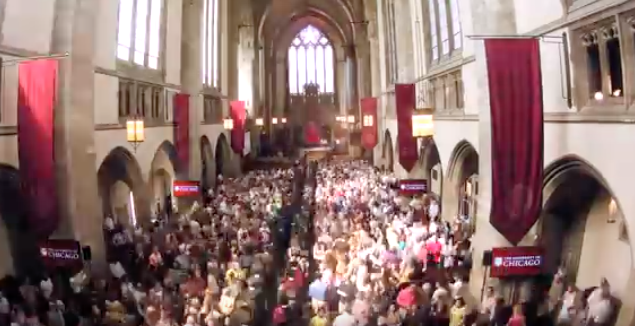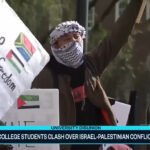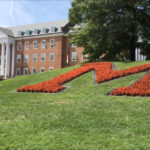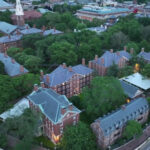“Safe Spaces” and Neo-Segregation for Black Students

Richard L. Cravatts, Ph.D., a Freedom Center Journalism Fellow in Academic Free Speech and President Emeritus of Scholars for Peace in the Middle East, is the author of Dispatches From the Campus War Against Israel and Jews.
Just before the fall semester kicked off for the class of 2020, John Ellison, Dean of Students at the University of Chicago, sent the incoming class a traditional letter welcoming them to the campus community and stressing some of the values that the university honors and promotes.
While sending a letter like this was not particularly unique, Ellison did vary his tone and message when he warned students that their experience at Chicago would, and should, involve challenging oneself to confront views different than one’s own—sometimes radically so—and that students should be prepared to have their own notions challenged, disputed, argued against, even denounced. That, Ellison suggested, is one of the key roles of a university.
“You will find that we expect members of our community to be engaged in rigorous debate, discussion and even disagreement,” he wrote, and “[a]t times this may challenge you and even cause discomfort.” When Ellison referred to the “discomfort” allegedly felt by many students when they confront ideas with which they do not agree, he was recognizing the unfortunate trend being witnessed on university campuses where students not only disagree with opposing views, they want to be sheltered from even having to confront them. More than that, when professors, fellow students, and guest speakers articulate ideology or viewpoints contrary to these fragile students’ own, intellectually frail students frequently move to suppress or punish that opposing speech.
But Ellison warned incoming students that that type of intellectual laziness and emotional self-preservation would have no place at the University of Chicago. “Our commitment to academic freedom means that we do not support so-called trigger warnings, we do not cancel invited speakers because their topics might prove controversial,” he wrote, “and we do not condone the creation of intellectual safe spaces where individuals can retreat from ideas and perspectives at odds with their own.” [Emphasis added.]
Students apparently have learned that when they complain to university officials about not feeling “safe,” feckless administrators seem eager to mollify the emotional and intellectual threats their students purportedly face, acting as if there is actual physical danger to the student minds and bodies over which they exercise control. And one group of students—black students—have also apparently learned that they can seek concessions and extract special accommodations as a favored campus victim group—especially since the death of George Floyd in Minneapolis last spring and the ascent of the Black Lives Matter movement.
One troubling manifestation of that trend has been the demand from black students, not only for the so-called safe spaces, but for proprietary, segregated spaces on campus where black students, and only black students, are availed of therapeutic areas where the stress of alleged systemic racism can be soothed with battalions of diversity and inclusion officials dedicated to nothing else than helping students navigate dangerous, race-obsessed campuses.
Last month, for example, the Black Student Union at DePaul University send a list of demands to the University’s administration after “the attempted coup that occurred in Washington, DC,” which, they contended, “was a scary act of white power,” but nothing compared to the collective stress felt by students by the George Floyd murder and “the following months after that which were horrifying for Black students” who were “scared for our lives.”
Apparently indifferent to Title VI regulations of the Civil Rights Act that would potentially prohibit DePaul from providing race-specific programs and facilities, the BSU, nevertheless, demanded of the university that it provide “University funded and directed (by Black faculty & staff) healing & safe spaces for Black students [emphasis added] on and off campus,” since, the BSU believed, “It is imperative that spaces for Black students on campus continue to receive the necessary funding and recognition as they provide safe and healing components through the presence of other students, faculty, and staff who look like us.”
At Rice University, black students presented the administration with a list of demands entitled “Tangible Ways to Improve the Black Experience, as Demanded by Black Students: Inaction is Not an Option” in which they made a “push for the decolonization of Rice University as it specifically pertains to Black Students.”
The imaginative students “outlined demands pertaining to the Black community and student well-being,” all germane “to comfortability and feeling included on campus . . . .” In a manner that echoed the request of the DePaul students, the Rice victims demanded “that Rice invest in creating a non-residential Black House that has all the features of a residential college but is specifically made for Black students and Black organizations to congregate and hold events” [emphasis added] because they “believe it would be best to have a central, safe space that Black students can meet and hangout in anytime of the day.” An additional black-only service was the “demand that Rice hire more Black counselors and therapists,” “counselors and therapists [who] must be trained on how to handle racial trauma.”
The University of Nevada at Las Vegas took a more proactive stance when, last September, it established a “Black Students Matter Healing Space” “designed to be a safespace [sic] for students who identify as part of the Black/African American Diaspora to process, to heal, get support, and share resources.” The language on the program’s website is peppered with the language of victimhood and racial injustice with the promise that “topics will include a variety of subjects related to navigating the nuances of Black identity including dealing with racial trauma, responding to microaggressions, managing relationships, parenting in a racially charged landscape, maintaining physical and mental health, navigating racist environments, responding to racism in academics and employment settings, and maintaining safety in racist situations.”
And in case black students have been previously unaware of the racial maladies that lurk on the fringes of their worlds, the diversocrats who conjured up this safe-space therapy also promise to cover “topics related to Black identity including gender identity, sexuality, colorism, internalized racism, media representation, cultural appropriation, and shifting identities in the Black community.” Whether white students or other non-black students, for that matter, have to confront any special social or emotional challenges goes unmentioned.
In August, as yet another example of self-imposed segregation, a student-led task force called “Black Violets” at New York University created a petition demanding that the University offer black student-only housing. “Through our personal experience,” the petition predictably reads, “we recognize the value of living with another Black student and having a safe space where we felt free to express ourselves to the highest degree.” The black-only housing apparently is going to reduce the stress and annoyance these students feel in having to interact with their non-black peers about race. “Too often in the classroom and in residential life, Black students bear the brunt of educating their uninformed peers about racism,” the petition read. “This assumed responsibility is exhausting and undoubtedly unfair to NYU’s Black community” who should not be tasked with “advocating for their humanity within their own homes.”
At Western Washington University, black students presented demands to the administration in which they asked, “In the aftermath of multiple acts of anti-Black violence, will the university see its complicity in everyday racism and its lack of real change to support its Black students as less violent than those perpetrated by the police?” Assuming the university would respond affirmatively, the first demand made by the students was that the school “Create a Black Student Space,” and not just an additional space in which black students would “seek comfort in.” The audacious students actually called for the immediate halt of ongoing construction of a new student union—for all students—and asked that it “begin the process of repurposing [the union] to be a space for Black Students . . .” only.
In 2019, The National Association of Scholars published a report titled, “Neo-Segregation at Yale,” which examined the five-decade process during which Yale University, in seeking to meet the needs and accommodate the special requests of its black students, found itself creating a balkanized campus where its minority students found themselves increasingly segregated from their non-black peers. Of course, this was a benign process—meant to ease the transition into the Ivy League institution for historically marginalized black students. But the effect of policies that allowed separate programs, separate facilities, separate “safe spaces” to be created and used by only black students ultimately led to an uncomfortable, not to mention counter-intuitive, result.
“[From 1964-2019], many American colleges and universities that initially sought to achieve racial integration found themselves inadvertently on a path to a new form of racial segregation,” wrote Peter W. Wood, the president of NAS, in the report’s introduction. Though his report focuses on Yale’s own experience with race, the findings of the report are clearly relevant to what is occurring at other campuses around the country. Wood noted, in fact, that “in the new form of segregation (neo-segregation), colleges eagerly recruit black and other minority students, but actively foster campus arrangements that encourage these students to form separate social groups on campus.”
Putting aside the fact that separate programs and facilities for blacks only (or any one race, for that matter) can potentially expose schools to the loss of federal funds for instituting programs and practices that discriminate on the basis of race, acceding to the demands of black students who want proprietary spaces, services, facilities, and amenities is victimizing these students once again—by making them live, think, and learn apart, coddled by diversocrats who promote a racist view of the country as a way of justifying their own administrative existence, but who hobble black students who ultimately fail to fully integrate into a university community.
“In this report,” the NAS authors noted, “we have tried to reconstruct how one development led to the next: how temporary expedients became settled ways of doing things, how concessions at one turn fed escalations at another, and how what was once unthinkable eventually became unquestionable.” Just as whites-only facilities or programs on a university campus would be unthinkable, universities should now question if the creation of neo-segregated, blacks-only safe spaces is even in the interest of the minority students school seek so assiduously to serve.




